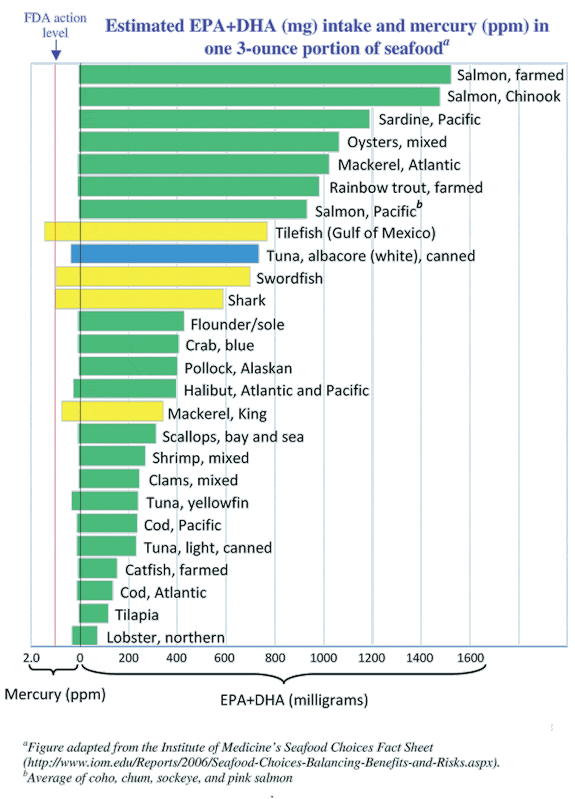The U.S. Food and Drug Administration (FDA) has the primary Federal responsibility for the safety of seafood products in the U.S. In 1997 the FDA adopted a regulation (21 CFR Part 123) that required all seafood processors to utilize the preventive system of food safety controls known as HACCP (Hazard Analysis Critical Control Point).
Seafood was the first food commodity in the U.S. to utilize this science based system of preventive food safety controls. Other commodities that now require a similar system of mandatory HACCP controls include meat, poultry, and juice products. The FDA’s seafood HACCP regulation requires that all shore side businesses that handle seafood after it is landed by fishing vessels until it reaches retail stores or restaurants to identify any food safety hazards that are likely to occur and implement a system of controls at critical steps in their operation to prevent, eliminate, or reduce these hazards to an acceptable level. This regulation also requires any firm in a foreign country that exports seafood products to the U.S. to implement the same system of HACCP controls.
The FDA provides guidance to the seafood industry to help businesses understand what food safety hazards are likely for each type of seafood product and the types of HACCP controls that must be implemented. In addition, FDA monitors food products that are imported into the U.S. and issues import alerts for products or foreign firms that do not meet U.S. standards. The FDA also works with the states to implement the National Shellfish Sanitation Program (NSSP) to ensure the safety of bivalve molluscan shellfish (clams, oysters and mussels) sold in the U.S.
Other Federal agencies also play a role in ensuring the safety of certain seafood products. The U.S. Department of Agriculture (USDA) has a regulation designed to ensure that seafood available in large retail stores is labeled to identify it’s country origin. This regulation is known as COOL (Country of Origin Labeling). The U.S. Department of Commerce National Oceanic and Atmospheric Administration’s Fisheries Service (NMFS) is responsible for the management of the nation’s fishery resources in U.S. territorial waters and also operates a voluntary seafood inspection and grading program. To learn more about NMFS programs click here. The U.S. Centers for Disease Control and Prevention (CDC) conducts food borne illness investigations and provides recommendations to the medical community for prevention and treatment. To find out more about CDC food safety programs click here. The U.S. Environmental Protection Agency (EPA) in collaboration with FDA sets standards for acceptable levels of contaminants in recreational fish and works with FDA on managing risk in commercial fishery products.
State and Local Regulatory Oversight
Each individual state also has regulations to ensure the safety of seafood products harvested, processed, distributed and sold at retail, and food service operations. State agencies manage fisheries in fresh waters in the state and ocean waters up to 3 miles from the shore. They also implement and enforce the regulations that ensure that molluscan shellfish are harvested from suitable waters and processed, distributed and sold in a manner that ensures safety. State agencies also inspect all food processing plants, wholesale, distribution and warehouse firms to ensure that they are handling, storing, processing and transporting all food including seafood in a safe and sanitary manner. These same agencies also frequently conduct Seafood HACCP inspections under contract with the FDA. State agencies also frequently inspect and regulate retail stores that sell food products including seafood. Most states have specific regulations for food retail stores that are based on the Model Food Code that is developed and periodically updated in a collaborative effort with the FDA. State or local (county, municipal or regional) agencies also adopt regulations and inspect restaurants and other food service establishments that sell prepared food including seafood for consumption away from home.
Recreational Fish
A wide variety of fish and shellfish are harvested by individuals for their own or their family’s consumption. The National Academy of Sciences estimated that one-fifth of the fish and shellfish eaten in the U.S. comes from recreational or subsistence fishing in the ocean, in marine bays or estuaries, or in freshwater lakes, ponds, rivers or streams. These products are not subject to the same regulations as commercial seafood products. Most states have specific regulations that prohibit the sale of recreational fish without a commercial harvester’s license. Fish populations in lakes, rivers, streams and ocean waters within 3 miles of the shore are managed by state agencies which develop and enforce rules and regulations to prevent overharvesting. Regional organizations of state fisheries managers provide a mechanism to help ensure uniformity of regulations from state to state. Food safety related concerns are overseen by state fisheries or health agencies. These agencies monitor levels of environmental contaminants such as pesticides, PCBs and mercury in fish in state waters and may issue fish consumption advisories to recreational fishermen. These advisories provide guidance to individuals who may catch fish from waters with elevated levels of contaminants to help them minimize risk. Commercial fishing is not allowed in polluted bodies of water or for certain species of fish that have unacceptable levels of contaminants. Federal guidance on appropriate contaminant levels and consumption advice is provided by the U.S. Environmental Protection agency. For links to individual state fish consumption advisories click here.

